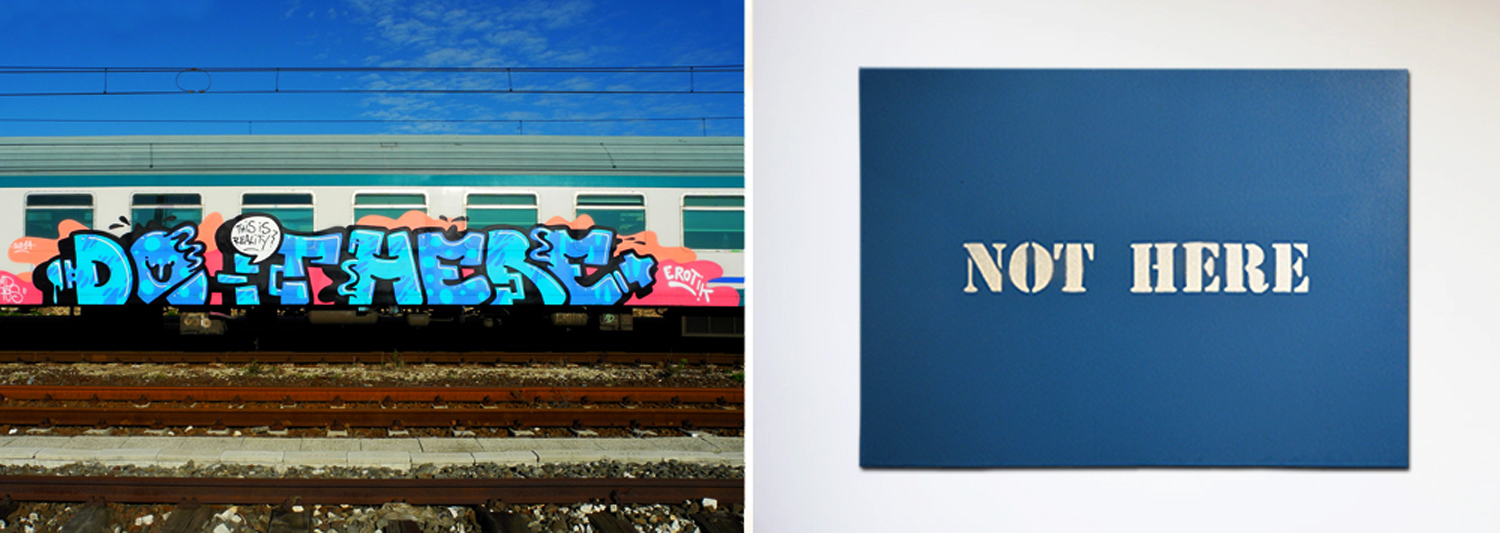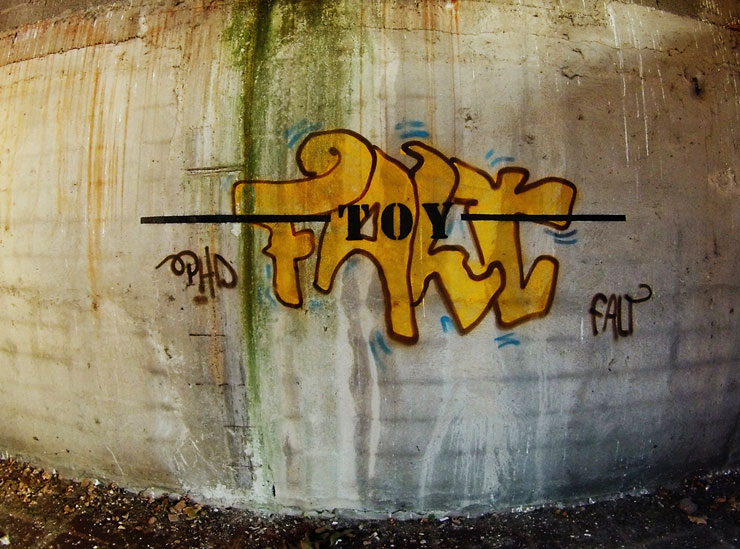We’ve been fascinated by the conceptual work of the self-described “Urban Activist” Fra. Biancoshock recently. He appears to be in the midst of distilling some of the fundamental arguments of the street art scene, from a provocative perspective of course. His earnest examination of these arguments sheds a light on their nature and provides a spark for further discussions.
A few weeks ago he stenciled the word “Toy” across a graffiti piece in the urban wild, and the genuine act contained the obvious insult as well as a meditation on its many implications about “rules” and history of the game. By committing the act of dissing purely as an academic exercise, he took us one step back from a simple act of rivalry to consider what it means to call someone a toy and to use a stencil to do it with.
Today he creates a piece for the viewer to consider another contested debate; Where does graffiti rightly belong, assuming it belongs anywhere? More to the point, is it correct to call a piece of work “graffiti” if it is made specifically to be hung in a gallery? Stripped of its illicit nature, is it actually graffiti when it is in the gallery? Further complicating the discussion, he uses a stencil for the inside piece, a technique many graffiti artists wouldn’t consider graffiti.
Erotik . Fra Biancoshock. “Do It Here” CLICK ON IMAGE TO ENLARGE (Photo courtesy of © Fra Biancoshock)
For Fra. Biancoshock’s new project, in which he collaborated with one of the historically well known and celebrated Italian graffiti writers, Erotik, he fairly decisively tells us his opinion on definition and gives a pretty straightforward directive. Perhaps he is advocating that graffiti and street artists not show their work as fine art in a gallery setting at all.
“This is a provocative project that underlines the importance of clarifying what graffiti is, where it were born, and where is the natural place to create it,” he says. “The phrase is simple and immediate. Similarly the concept is simple: Do graffiti in the street, illegally, without sponsors, not on the canvases for exhibition spaces,” he says. In other words, you cannot make a work for the gallery and call it graffiti, and that is not where it belongs.
We think that’s what it means anyway.
Other Articles You May Like from BSA:
Google Maps does a pretty good job at simply documenting streets. These professionals and others like them know how to discern, interpret and present the work of Street Artists in ways that can add co...
If your house is destroyed and you are chased from your neighborhood by bombs, anything that recalls normalcy is welcomed. Street Artist Karl Addison tells us a recent project with two other artists w...
Our weekly focus on the moving image and art in the streets. And other oddities. Now screening : 1. ShowZart - Man One / A Street Art Story 2. "Opening Lines" with Pat Perry3. Kids Dancing it...
What are you celebrating this season? We’re celebrating BSA readers and fans with a holiday assorted chocolate box of 15 of the smartest and tastiest people we know. Each day until the new yea...
Welcome to BSA Images of the Week. Here’s our weekly interview with the streets, this week featuring CAM, David F. Barthold, JJ Veronis, Martha Cooper, Poi Everywhere, REVS, SoulOne, Tones, UF...
 BROOKLYN STREET ART LOVES YOU MORE EVERY DAY
BROOKLYN STREET ART LOVES YOU MORE EVERY DAY












